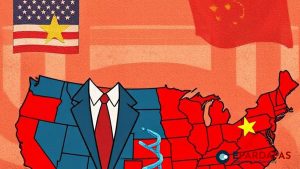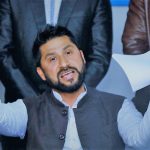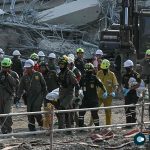
China to Strengthen Belt and Road Initiative in Africa Amid Criticism
China has pledged to bolster its expansive Belt and Road Initiative (BRI), emphasizing “high-quality cooperation” as it prepares for a summit with African leaders in Beijing this week. Africa has become a crucial region for the BRI, with Chinese companies signing contracts worth over $700 billion between 2013 and 2023, according to China’s Ministry of Commerce. Despite this massive investment, critics argue that the BRI has burdened African nations with unsustainable debt and has funded projects that have adverse environmental impacts.
Ahead of the summit, here is a look at five significant BRI projects in Africa that highlight both the initiative’s achievements and the controversies surrounding it.
Kenya’s Incomplete Standard Gauge Railway
One of Kenya’s most ambitious infrastructure projects is the Standard Gauge Railway (SGR), which was financed by China’s Exim Bank. The railway, which connects Nairobi to the port city of Mombasa, has significantly reduced travel time between the two cities from 10 hours to just four since its opening in 2017. The project, costing $5 billion, is the most expensive infrastructure development in Kenya since its independence over 60 years ago.
However, plans to extend the railway into Uganda have stalled due to financial difficulties faced by both countries in repaying their BRI loans. The project has also been plagued by corruption allegations and environmental concerns, particularly regarding its route through a wildlife park. Kenya’s President William Ruto requested a $1 billion loan from China last year to restructure existing debt and complete other stalled BRI projects. Kenya’s total debt to China now exceeds $8 billion.
Strategic Port Facilities in Djibouti
Djibouti, located at a strategic maritime chokepoint between the Red Sea and the Gulf of Aden, hosts China’s first permanent overseas naval base, established in 2016. Alongside this military installation, China has played a key role in developing the nearby Doraleh Multi-Purpose Port. The naval base, reportedly costing $590 million, serves multiple purposes, including resupplying Chinese navy ships, supporting regional peacekeeping efforts, and combating piracy. However, the base’s proximity to a U.S. military installation has raised concerns about potential espionage activities.
China Merchants Port Holdings, which owns a 23.5% stake in Doraleh, gained control of the port after the Djiboutian government controversially seized it from UAE-based DP World. The UAE company has claimed that it was forced out to make way for Chinese interests.
3. Africa’s Longest Suspension Bridge in Mozambique
BRI investments in Africa have resulted in the construction of over 12,000 kilometers of road and railway, 20 ports, and more than 80 power facilities, according to Chinese state media. Among these is the Maputo-Katembe Bridge in Mozambique, Africa’s longest suspension bridge. Completed in 2018 by the China Road and Bridge Corporation, the bridge connects the capital city, Maputo, with its suburb, Katembe. Previously, crossing the Bay of Maputo required a ferry or a 160-kilometer drive on unpaved roads prone to flooding.
The bridge, which cost approximately $786 million, was 95% financed through Chinese loans. Critics, however, have pointed out that the project was overpriced and that the interest rates on these loans are excessively high.
Mineral Investments in Botswana and Beyond
In recent years, China’s BRI investments in Africa have increasingly focused on extracting minerals vital for high-tech industries, including electric vehicles. In 2023 alone, China invested $7.8 billion in African mining ventures, according to the American Enterprise Institute. A notable deal includes the $1.9 billion purchase of Botswana’s Khoemacau mine, one of the world’s largest copper mines, by the state-owned MMG.
China has also expanded its investments into cobalt and lithium mines across Zambia, Namibia, and Zimbabwe. However, political instability and regional conflicts have sometimes disrupted these operations. For instance, in July this year, the Democratic Republic of Congo suspended mining activities, including those involving Chinese companies, in certain areas to “restore order.”
Coal and Clean Energy Projects
China’s investments in African power generation have sparked environmental concerns, particularly regarding coal-fired power plants. In Kenya, Chinese firms were contracted in 2015 to build a coal plant near the UNESCO World Heritage Site of Lamu Old Town. However, the project was canceled in 2020 following widespread protests against its environmental impact.
Responding to global criticism, Chinese President Xi Jinping announced in 2021 that China would no longer finance coal plants abroad. That same year, Chinese investors withdrew from Zimbabwe’s $3 billion Sengwa coal project. Instead, Chinese financing has shifted towards renewable energy projects, such as the $533 million expansion of Zimbabwe’s Kariba Hydroelectric Power Station. In Nigeria, Chinese loans are part-funding the $4.9 billion Mambilla hydroelectric plant, set to be the country’s largest power station.
China has signaled a commitment to using the BRI to support green energy projects. A white paper from the State Council Information Office underscored China’s focus on facilitating a green transition through the BRI.
Conclusion
As China doubles down on its BRI investments in Africa, the initiative continues to draw both praise and criticism. While the infrastructure projects have undoubtedly spurred economic growth and development, they have also raised concerns about debt sustainability, environmental degradation, and geopolitical tensions. As the BRI evolves, the balance between these benefits and challenges will be crucial for the future of China’s engagement with Africa.













Comments